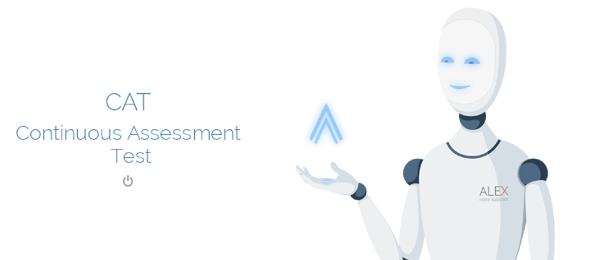Ark International School, Begusarai

Testing today can be anything from a mere bureaucratic hurdle to a nerve-wracking, future-determining experience for students. As computerized adaptive systems enable us to deliver truly continuous assessment, how will testing change? How will we use it to improve educational outcomes? In Disrupting Class, Harvard Business School professor and expert on innovation Clayton Christensen provides an answer: “When students learn through student-centric online technology, testing doesn’t have to be postponed until the end of an instructional module and then administered in a batch mode. Rather, we can verify mastery continually to create tight, closed feedback loops. Misunderstandings do not have to persist for weeks until the exam has been administered and the instructor has had time to grade every student’s test.”
1. Clarified purpose of assessment for students
What exactly is the point of testing in the first place? To compare students? To facilitate their passing to another level? To assess their proficiency and award them a corresponding grade? Too often, the social context and negative emotions involved in assessment can get muddled with its purpose — generally to assess student proficiency and document it in some way. How often, for instance, are students allowed to pass, regardless of whether they truly demonstrate proficiency in a subject? And how often are they bored waiting for the next opportunity to level up and tackle new challenges? What percentage of school time is spent around academic anxieties and insecurities — and what percentage is spent actually doing the cognitive work of mastering new concepts, demonstrating mastery of that material, and developing a love of learning? When assessment becomes continuous, students are given a constant stream of opportunities to prove their mastery. Assessment becomes embedded into the “flow” of learning, and students can demonstrate mastery as quickly as they choose to. The path to actual progress becomes clear and students’ lives become increasingly oriented toward real learning.
2. Mastery-based learning in action
Continuous assessment allows mastery-based learning — a teaching methodology premised on the idea that progress should be based on mastery instead of seat time — to be implemented. Students who are struggling will not automatically advance before they have a chance to master the material at hand. On the other hand, advanced students can progress through material at their own pace and remain engaged by pursuing more challenging work as they pass out of the basics. In this sense, students cannot be satisfied with their achievements relative to others; they are encouraged to seek their own course and take responsibility for their learning.
3. Increased self-awareness for students
Time and again, we encounter evidence that self-awareness — understanding of how one feels, thinks, and learns (also known as metacognition) — is one of the most significant factors in professional and personal success. The renowned psychologist, Howard Gardner has argued that self-knowledge — “intrapersonal skill” — is one of the eight defining types of intelligence (the others being “linguistic,” “logical-mathematical,” “naturalist,” “bodily-kinesthetic,” “spatial,” “musical,” and “interpersonal”). The more continuously we assess students and provide feedback, the more knowledge they can gain about themselves — what it takes for them to master something, how they can approach problems differently, what their blind spots are, and how to eliminate them.
